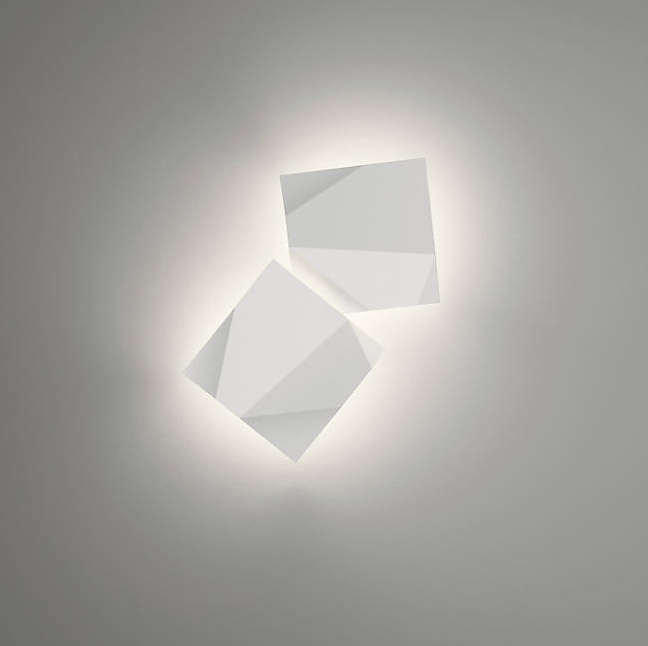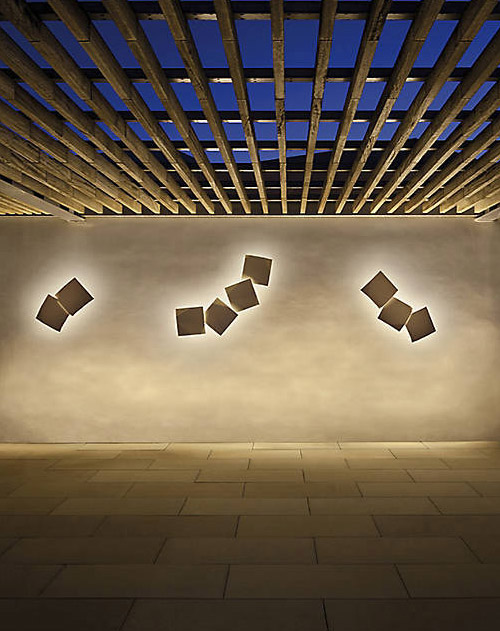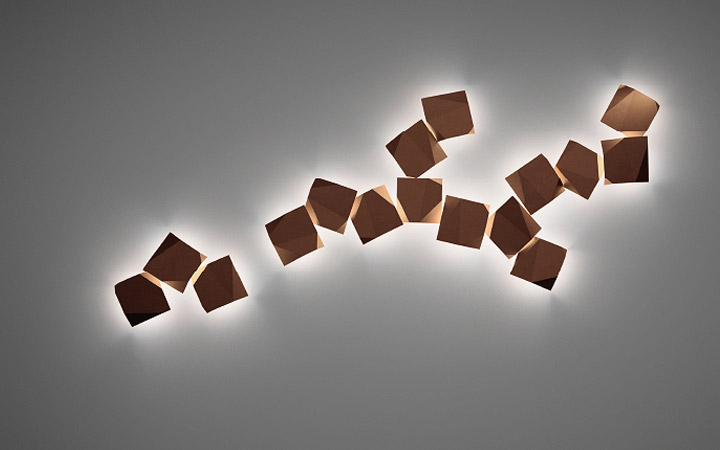
What was the source of inspiration/creativity for designing Origami?
The traditional Japanese paper folding art of Origami is a unique form of sculpture; it uses a material so utterly two-dimensional, and transforms it into a finished and exquisite work of art. Inspired by this tradition, the Origami Collection by Vibia blends light functionality with artistic creation and transforms plain wall surfaces into wall art light sculptures.
What is the manufacturing process of Origami?
Origami is created in our Barcelona factory with all of its parts sourced from local vendors.
How can multiple fixtures be manipulated by the designer to create unique shapes and sizes?
For large interior design projects, a juxtaposition of the different clusters can give the illusion of something much more, like ivy climbing a façade.

Can you explain how Origami can be used as a form of decorative wall art for designers?
Origami blends light functionality with an opportunity for artistic creation as walls become the canvas and lighting fixtures transform into wall art pieces.
We've seen shadow-casting light as a trending concept in lighting design - how do you see Origami fitting this trend?
Origami is part of a Vibia collection segment called Wall Art - each of the pieces in the Wall Art category cast an ambient indirect glow onto the wall, necessarily causing some play of light and shadows. The beautiful shapes are still there during the day, but it is only at night that the design truly becomes alive.
What is important to you about using energy-efficient LED technology as Origami's light source?
Of course, sustainability is always important, but for the product designers we work with it is more about expressionism. The slim profiles of the Origami are a totally re-imagined way of thinking about a wall sconce, really lighting in general, and are all directly related to the newest advances in LED technology.
Is Origami's LED dimmable to allow for even more artistic expression?
Origami uses electronic TRIAC dimming technology to allow the designer to set the feeling and mood each time. This type of dimming system is compatible with many homes' existing wall dimmers, making it suitable for any interior design project.
Video: Origami by Vibia
How do you see Origami being used in indoor applications?
Indoor, the Origami has been used to create a little extra drama or interest in a contemporary living room or entryway. It's also a beautiful focal piece for a large open space like a studio apartment. The white lacquer finish (also available in green and oxide lacquer) is able to create interest while still minimal enough to preserve that feeling of wide open space.
How do you see Origami being used in outdoor applications?
Outdoor applications for this piece are boundless. Each cluster provides ample illumination and camouflages into any landscape where you might want to enjoy a pleasant summer evening a la fresca.




